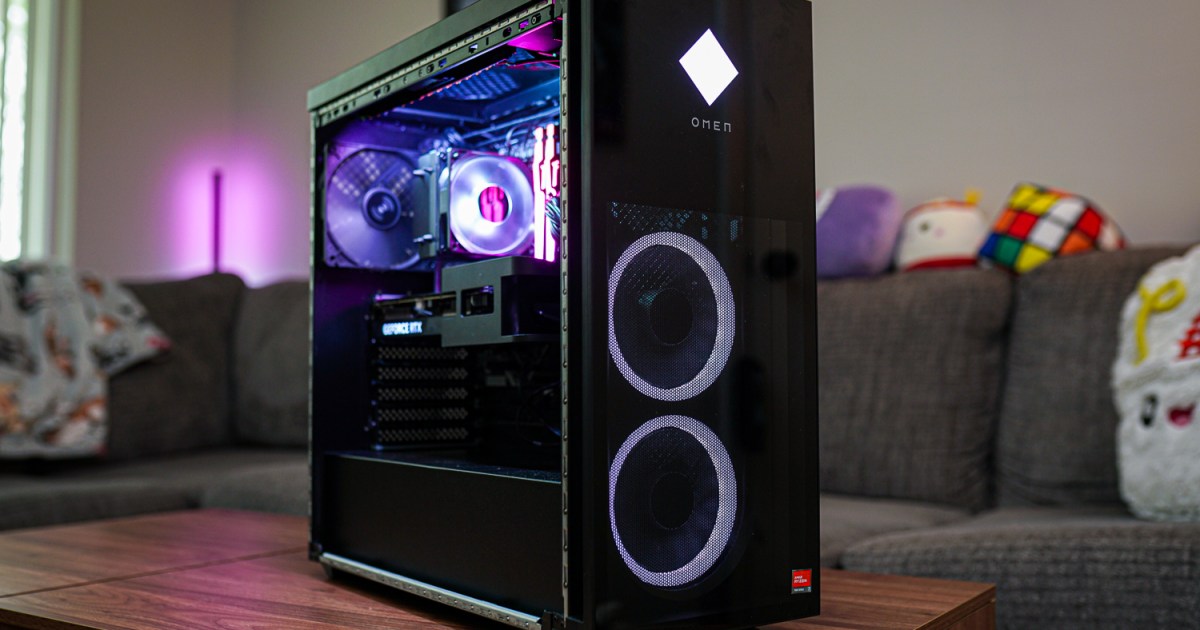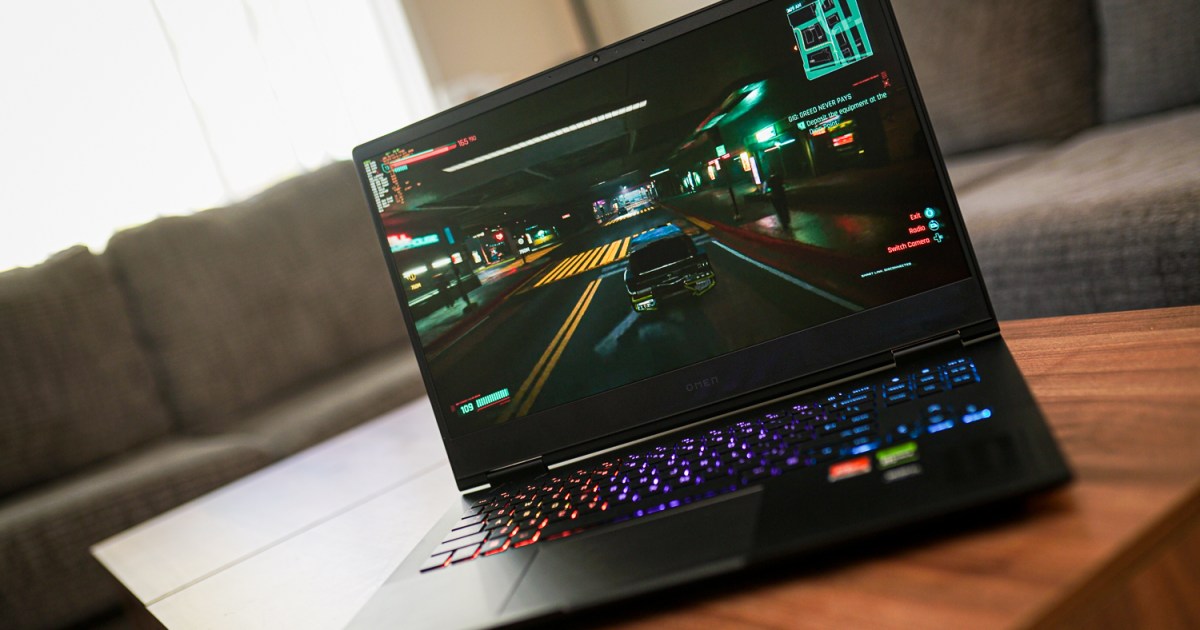The LG UltraGear Dual Mode OLED (32GS95UE-B) is a truly unique gaming monitor, offering a compelling blend of 4K resolution at 240Hz and 1080p at a blistering 480Hz. This dual refresh rate functionality is its defining feature, making it a standout in the crowded gaming monitor market. But does this innovation justify its premium price tag? This in-depth review explores the LG UltraGear Dual Mode OLED’s performance, features, and value proposition to help you decide if it’s the right monitor for your gaming needs.
Design and Features: A Modern Aesthetic
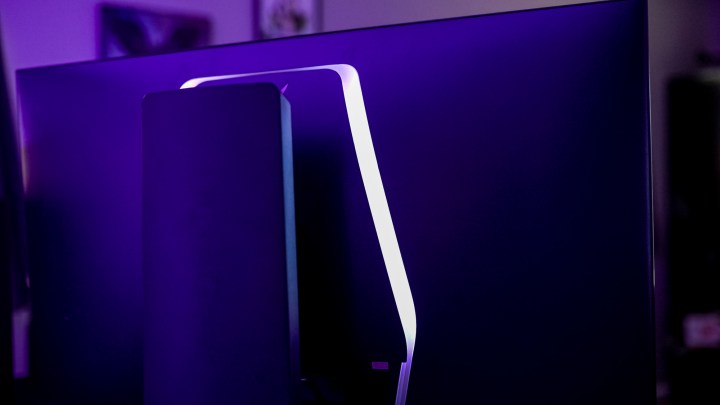 Lighting on the back of the LG UltraGear Dual Mode OLED.
Lighting on the back of the LG UltraGear Dual Mode OLED.
LG has adopted a sleek, minimalist design for the UltraGear Dual Mode OLED, reminiscent of Samsung’s Odyssey OLED G8. The plastic stand, while thicker than expected, provides robust support and a wide range of adjustments, including swivel, tilt, and pivot. A clean cable routing channel within the stand base helps maintain a tidy setup. The rear of the monitor features a distinctive RGB light strip that adds a touch of personalized flair.
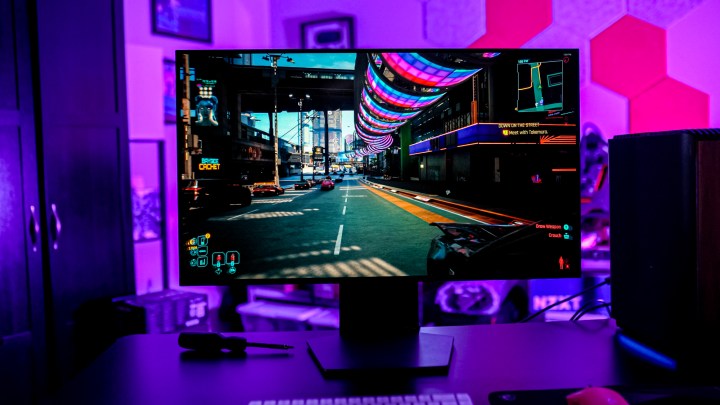 Cyberpunk 2077 on the LG UltraGear Dual Mode OLED.
Cyberpunk 2077 on the LG UltraGear Dual Mode OLED.
The front of the monitor is remarkably clean, with a virtually bezel-less design that maximizes immersion. The stand’s generous adjustment range allows for comfortable viewing in various orientations, including vertical mode. A VESA mount option provides further flexibility for those who prefer monitor arms.
Dual Mode in Action: 4K 240Hz vs. 1080p 480Hz
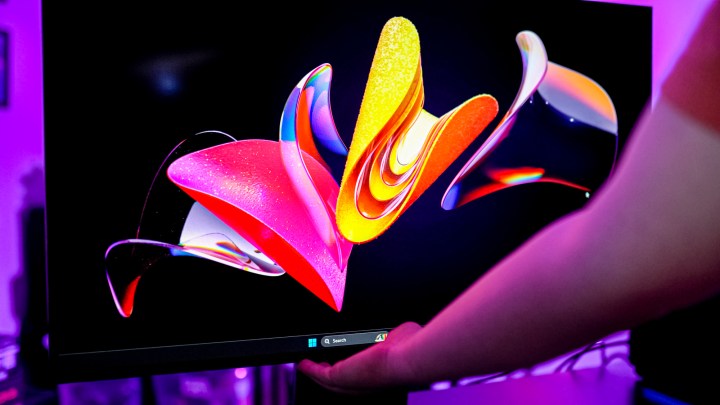 Someone pressing a button on the LG UltraGear Dual Mode OLED.
Someone pressing a button on the LG UltraGear Dual Mode OLED.
The Dual Mode feature is activated by a conveniently located switch under the left side of the monitor. Switching between 4K 240Hz and 1080p 480Hz is seamless and takes only a few seconds. While the 1080p mode may seem like a compromise on a 32-inch display, the image quality remains surprisingly good, making it a viable option for competitive gaming scenarios where higher refresh rates are crucial. However, it’s important to note that some games may not handle the resolution and refresh rate switch smoothly, resulting in display or control issues.
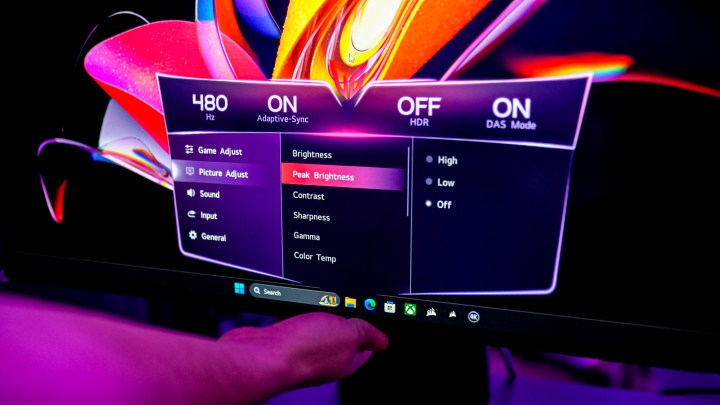 The peak brightness setting in the on-screen display on the LG UltraGear Dual Mode OLED.
The peak brightness setting in the on-screen display on the LG UltraGear Dual Mode OLED.
Beyond Dual Mode, the LG UltraGear offers integrated Pixel Sound speakers, which deliver surprisingly decent audio for a gaming monitor, along with DTS Headphone:X support for enhanced spatial audio through headphones. Notably absent is Black Frame Insertion (BFI), a feature found on competing OLED monitors that can improve motion clarity.
Connectivity and Control: Missing a Few Key Features
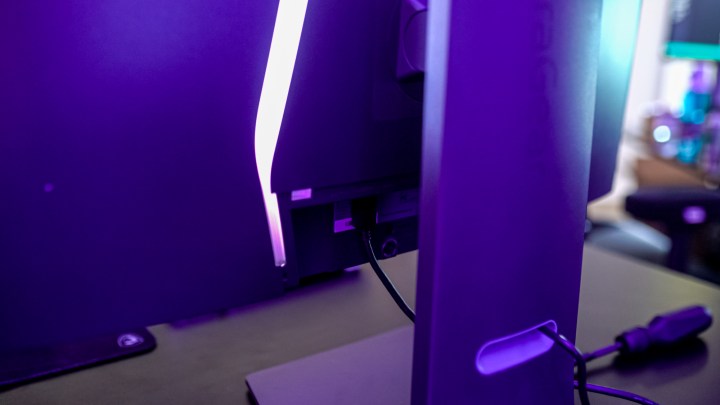 Ports on the LG UltraGear Dual Mode OLED.
Ports on the LG UltraGear Dual Mode OLED.
The monitor features two HDMI 2.1 ports, one DisplayPort 1.4 port, and two USB ports. While the inclusion of DisplayPort 2.1 would have been appreciated, the existing ports support the full resolution and refresh rate thanks to Display Stream Compression (DSC). A significant omission is the lack of USB-C input and a KVM switch, features commonly found on similarly priced monitors. Controlling the on-screen display (OSD) is handled by a responsive joystick, a welcome improvement over previous LG UltraGear models.
Image Quality: Impressive Brightness and Color
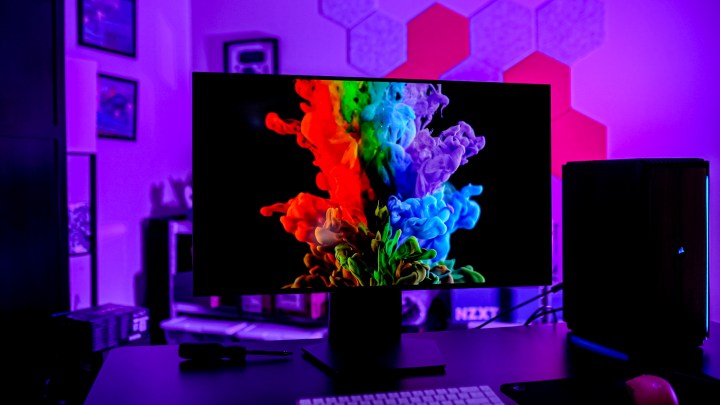 A color splash on the LG UltraGear Dual Mode OLED.
A color splash on the LG UltraGear Dual Mode OLED.
The LG UltraGear Dual Mode OLED utilizes a WOLED panel from LG Display, delivering impressive image quality. Peak brightness in HDR reaches over 1100 nits, while SDR brightness exceeds 400 nits. Color coverage is excellent, covering 100% of sRGB, 97% of DCI-P3, and 88% of AdobeRGB. Color accuracy is good, though not quite as precise as some QD-OLED panels. The matte coating, while effective, slightly diminishes the vibrancy of the display. Text clarity, however, is notably improved compared to other OLED monitors.
 A parrot on the LG UltraGear Dual Mode OLED.
A parrot on the LG UltraGear Dual Mode OLED.
Gaming Performance: The Dual Mode Dilemma
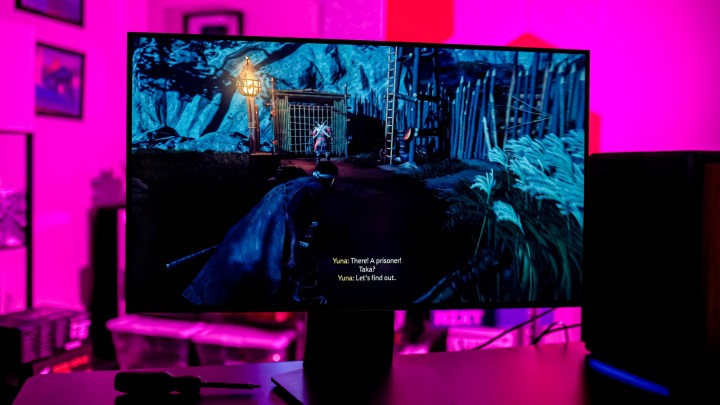 Ghost of Tsushima on the LG UltraGear Dual Mode OLED.
Ghost of Tsushima on the LG UltraGear Dual Mode OLED.
The 32-inch 4K OLED panel coupled with a 240Hz refresh rate makes for an immersive and responsive gaming experience. The added 480Hz mode at 1080p offers a potential advantage in competitive titles, but the practicality of switching between modes is debatable.
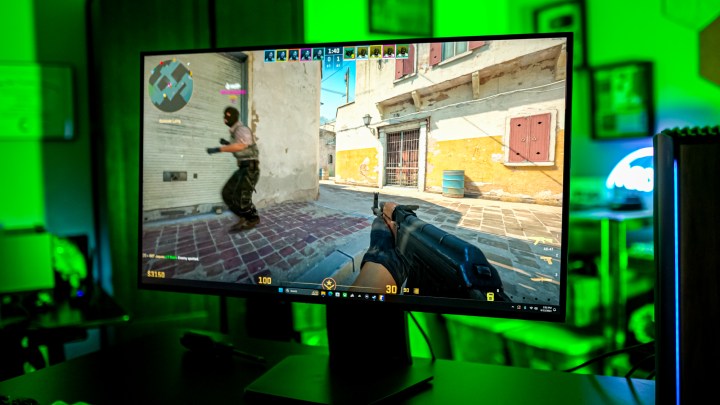 Counter-Strike 2 on the LG UltraGear Dual Mode OLED.
Counter-Strike 2 on the LG UltraGear Dual Mode OLED.
For gamers focused primarily on cinematic titles, the 240Hz refresh rate at 4K is more than sufficient, and cheaper alternatives exist. Similarly, dedicated esports players might find more value in a dedicated 500Hz monitor.
Warranty and Burn-in Prevention: Room for Improvement
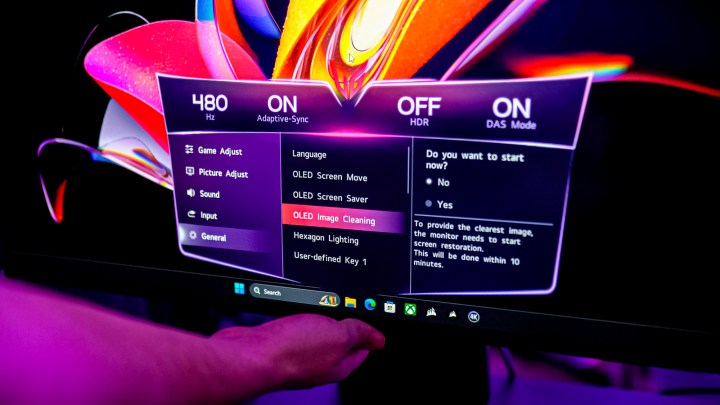 Burn-in prevention features on the LG UltraGear Dual Mode OLED.
Burn-in prevention features on the LG UltraGear Dual Mode OLED.
LG includes standard burn-in prevention features such as pixel shifting and a screen saver. While the two-year warranty now covers burn-in, it lags behind the three-year warranties offered by competitors.
Conclusion: A Niche Product with a Premium Price
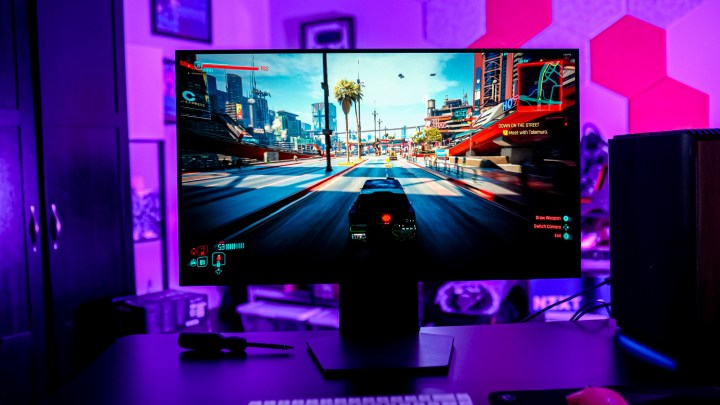 Cyberpunk 2077 running on the LG UltraGear Dual Mode OLED.
Cyberpunk 2077 running on the LG UltraGear Dual Mode OLED.
The LG UltraGear Dual Mode OLED is a well-designed and innovative gaming monitor, but its dual refresh rate feature caters to a specific audience. Unless you frequently switch between 4K cinematic gaming and competitive 1080p gameplay, the premium price may be difficult to justify given the availability of less expensive alternatives offering similar performance. If you’re on the fence, waiting for a sale or carefully considering your specific gaming needs is recommended.





